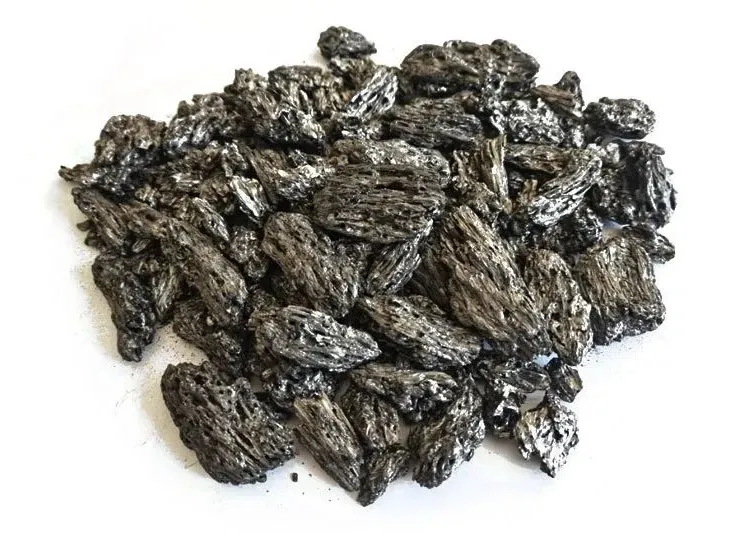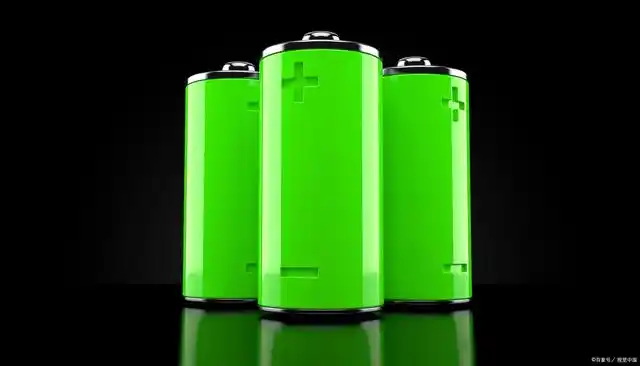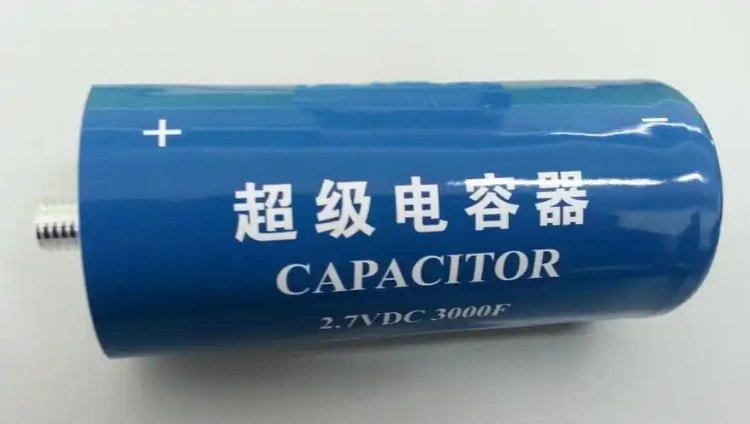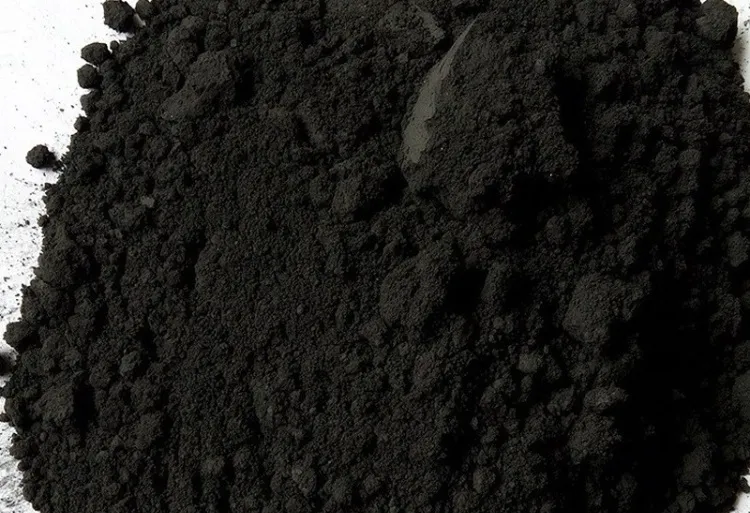Coca-Cola ad ago È un materiale in carbonio ad alte prestazioni con una lucentezza metallica e un colore grigio-argento. La sua superficie è fibrosa o aghiforme, con una consistenza scivolosa. Contiene piccoli pori ovali al suo interno. Coca-Cola ad ago È costituito da idrocarburi policiclici aromatici a grandi molecole con strati aromatici piatti. Ha una struttura microcristallina simile alla grafite con elevata orientazione unitaria. La struttura microscopica segue il modello di Franklin ed è tipica di un carbonio grafitizzabile. È un materiale ideale per la preparazione di carbonio poroso. Riscaldato a temperature superiori a 2000 °C, forma strutture stratificate simili alla grafite.

Grazie alla sua eccellente conduttività elettrica, conduttività termica, bassa dilatazione termica e resistenza agli shock termici, il coke aghiforme è ampiamente utilizzato nella produzione di elettrodi in grafite per l'acciaieria, nell'industria aerospaziale e in altri settori. Negli ultimi anni, è diventato un argomento di ricerca di grande interesse nel campo della scienza dei materiali a livello mondiale.
Il coke aghiforme può essere classificato in a base di carbone e a base di petrolio, a seconda della fonte di materia prima. Il coke aghiforme a base di carbone viene prodotto mediante carbonizzazione ad alta temperatura di catrame di carbone, pece di catrame di carbone o olio distillato flash.
Il coke aghiforme a base di petrolio viene prodotto mediante carbonizzazione ad alta temperatura del catrame di etilene, del petrolio residuo da cracking sotto vuoto e termico, o della fanghiglia di petrolio da cracking catalitico. Grazie al suo basso contenuto di zolfo, ceneri, metalli e alla facile grafitizzazione, è attualmente la principale materia prima per la grafite artificiale. Tuttavia, i suoi costi di produzione sono elevati e i requisiti per le materie prime sono rigorosi.
Preparazione del coke ad aghi
Il coke aghiforme viene prodotto attraverso la carbonizzazione in fase liquida, pirolizzando e polimerizzando gradualmente le materie prime per formare sfere mesofasiche, che poi crescono, si fondono, si orientano e infine carbonizzano in una struttura fibrosa aghiforme. Il processo di produzione include il pretrattamento delle materie prime, la coking ritardata e la calcinazione.
La coking ritardata, la fase principale del processo di coking, prevede la distillazione e la carbonizzazione, producendo pece raffinata e coke. La calcinazione rimuove le sostanze volatili e l'umidità per migliorarne la densità effettiva.
Il coke aghiforme derivato dal carbone richiede un pretrattamento più rigoroso rispetto al coke aghiforme derivato dal petrolio, ma entrambi i tipi sono simili per struttura e applicazioni. Il coke aghiforme derivato dal petrolio, tuttavia, ha costi di produzione inferiori e una maggiore capacità di mercato.
La grafitizzazione del coke aghiforme comporta processi come schiacciamento, macinazione, modifica della superficie, trattamento termico e modifica superficiale, simile alla grafitizzazione del carbone. Il coke aghiforme, in quanto carbonio morbido con elevata conduttività elettrica e basse impurità, è comunemente utilizzato nelle batterie agli ioni di litio. Tuttavia, ha una bassa capacità teorica e il suo utilizzo nelle batterie richiede la grafitizzazione ad alta temperatura per trasformarsi in grafite artificiale.
La ricerca sui materiali anodici a base di coke aghiforme per batterie agli ioni di litio si concentra su tecniche di modifica e compositi per migliorare la capacità e ridurre i costi, rispondendo alla crescente domanda di batterie ad alta densità energetica, a ricarica rapida e sicure.
Applicazione del coke ad aghi in diversi campi
Il coke aghiforme ha tre utilizzi principali: elettrodi ad alta potenza, materiali al carbonio speciali e anodi per batterie agli ioni di litio. Gli elettrodi di grafite ad alta potenza realizzati con coke aghiforme vengono utilizzati nei forni ad arco elettrico per la produzione di acciaio. La produzione di acciaio con forno ad arco elettrico presenta vantaggi come basso inquinamento e basso consumo energetico. Gli elettrodi di grafite ad alta potenza realizzati con coke aghiforme presentano bassa dilatazione termica, elevata conduttività elettrica ed elevata resistenza meccanica.
Questi elettrodi riscaldano e fondono efficacemente i metalli nei forni ad arco elettrico. Come materiale anodico, il coke aghiforme, come il carbonio tenero, è facile da grafitizzare ed è economico. Dopo il trattamento termico ad alta temperatura, forma grafite artificiale con buona stabilità ciclica ed elevata capacità specifica.
Applicazione del coke aciculare negli elettrodi di grafite
Gli elettrodi di grafite sono utilizzati principalmente nei forni ad arco elettrico, nei forni ad arco sommerso e nei forni a resistenza. La produzione di acciaio in forno ad arco elettrico è più rispettosa dell'ambiente rispetto alla produzione di acciaio in altoforno, il che ha portato a politiche favorevoli in molti paesi. La crescente scala della produzione di acciaio in forno ad arco elettrico ha fatto aumentare la domanda di elettrodi di grafite. Attualmente, la produzione di acciaio in forno ad arco elettrico si sta orientando verso forni più grandi e ad altissima potenza. Di conseguenza, i requisiti per gli elettrodi di grafite stanno diventando più severi. Poiché la corrente massima ammissibile per gli elettrodi di grafite in forno ad arco elettrico è positivamente correlata al loro diametro, lo sviluppo di elettrodi di grafite di grande diametro è essenziale. La produzione di elettrodi di grafite di grande diametro richiede coke aghiforme di alta qualità.
Applicazione del coke aciculare nell'elettrodo negativo della batteria agli ioni di metallo alcalino

Attualmente, le batterie agli ioni di metallo alcalino includono principalmente batterie agli ioni di litio, agli ioni di sodio e agli ioni di potassio. Le batterie agli ioni di litio sono ampiamente utilizzate nella vita quotidiana. Le batterie agli ioni di sodio e agli ioni di potassio hanno attirato particolare attenzione come sistemi di accumulo di energia alternativi.
Le batterie agli ioni di metallo alcalino sono costituite principalmente da catodo, anodo, elettrolita, separatore e involucro della batteria. Il materiale dell'anodo, in quanto componente chiave, influisce notevolmente sulle prestazioni complessive della batteria. Per le batterie agli ioni di litio, i materiali anodici commerciali includono grafite artificiale e grafite naturale, con la grafite artificiale che rappresenta l'80%. La grafite artificiale può essere suddivisa in coke di petrolio e coke di carbone. Il coke di petrolio può essere ulteriormente suddiviso in coke di petrolio e coke aghiforme. I materiali anodici realizzati con coke aghiforme hanno buone chimico stabilità, elevata capacità ed eccellente conduttività. Vengono utilizzati per produrre materiali per elettrodi ad alta densità di pressione e alta densità energetica.
Applicazione del coke ad aghi nei supercondensatori

Negli ultimi anni, i supercondensatori, dispositivi di accumulo di energia che combinano le caratteristiche sia dei condensatori che delle batterie, hanno guadagnato attenzione. Offrono una densità energetica maggiore rispetto ai condensatori tradizionali e una densità di potenza maggiore rispetto alle batterie secondarie, con un ciclo di vita di oltre un ordine di grandezza superiore a quello delle batterie secondarie. I supercondensatori possono essere utilizzati per il recupero e il rilascio di energia durante l'avviamento, l'accelerazione e la frenata di vari veicoli. Nella maggior parte dei casi, i supercondensatori vengono combinati con batterie secondarie o celle a combustibile ad alta densità energetica per formare sistemi di alimentazione ibridi. Questa combinazione soddisfa i requisiti dei veicoli a nuova energia in termini di elevate velocità di ricarica, elevata capacità specifica ed elevata efficienza di recupero energetico.
Coke ad ago per la preparazione del grafene

Il grafene possiede eccellenti proprietà ottiche, elettriche e meccaniche, con ampie applicazioni nella scienza dei materiali, nell'energia e nella biomedicina. I principali metodi di preparazione del grafene includono l'esfoliazione meccanica, la crescita epitassiale su carburo di silicio, l'esfoliazione con solvente, l'esfoliazione chimica (ossidazione/riduzione) e la deposizione chimica da vapore (CVD). Tuttavia, la maggior parte di questi metodi, come l'esfoliazione meccanica e l'esfoliazione con solvente, viene tipicamente utilizzata in laboratorio. Il metodo CVD, sebbene efficace, presenta un processo relativamente complesso e costi più elevati.
Coke aghiforme per l'industria fotovoltaica
Le celle solari sensibilizzate a coloranti (DSSC) stanno emergendo come un nuovo dispositivo fotovoltaico e stanno diventando un punto di riferimento per la ricerca. Rispetto alle celle solari tradizionali, le DSSC presentano vantaggi quali una maggiore durata (15-20 anni), una facile produzione industriale su larga scala, un ciclo di recupero energetico breve, costi di produzione inferiori (solo da 1/10 a 1/5 delle celle solari al silicio) e processi produttivi atossici e privi di inquinamento. Negli ultimi anni, i ricercatori hanno scoperto che il coke aghiforme presenta un'elevata conduttività, resistenza al calore, resistenza alla corrosione e attività elettrocatalitica per il triioduro. Inoltre, il suo basso costo lo rende un materiale promettente per gli elettrodi delle celle solari sensibilizzate a coloranti.
Conclusione
Il coke aghiforme, un materiale carbonioso altamente ordinato, è essenziale per le batterie agli ioni di litio ad alte prestazioni grazie alla sua eccellente conduttività e al basso contenuto di impurità. Combinando la macinazione, si ottimizza la struttura delle particelle, aumentandone la capacità e riducendo i processi ad alto consumo energetico, in linea con la domanda di batterie sostenibili e ad alto consumo energetico.
Polvere epica, oltre 20 anni di esperienza lavorativa nel settore delle polveri ultrafini. Promuovere attivamente lo sviluppo futuro delle polveri ultrafini, concentrandosi sul processo di frantumazione, macinazione, classificazione e modifica delle polveri ultrafini. Contattaci per una consulenza gratuita e soluzioni personalizzate! Il nostro team di esperti è impegnato a fornire prodotti e servizi di alta qualità per massimizzare il valore della tua lavorazione delle polveri. Epic Powder: il tuo esperto di fiducia nella lavorazione delle polveri!
